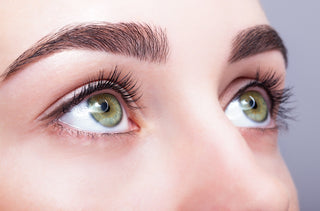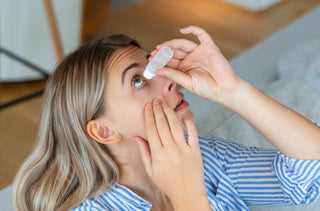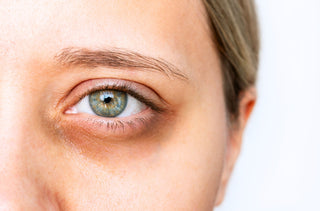You may have already noticed small black spots, filaments or dots that seem to float in front of your eyes, especially when looking at a clear surface such as a blue sky or white wall. These phenomena, known as “floating bodies”, are common and generally benign. But where do they come from, and should you be concerned?
What are floaters?
Floaters are small particles that move around in the vitreous, a gelatinous substance that fills the inside of the eye. As they pass in front of the retina, they cast shadows that we perceive as moving shapes. Their appearance varies: some look like filaments, others like dots or bubbles.
What causes floaters?
Floaters can be caused by a number of factors:
- Natural aging: with age, the vitreous liquefies and particles agglomerate, forming visible opacities.
- Posterior vitreous detachment: A common phenomenon after the age of 50, when the vitreous detaches from the retina, creating more floaters.
- Intraocular inflammation: Infection or inflammation of the eye, such as uveitis, can cause floating debris.
- Ocular hemorrhage: Ruptured blood vessels can release blood into the vitreous, producing visible spots.
- Retinal tearing or detachment: A more serious problem, often accompanied by flashes of light, requiring immediate consultation.
When should you be concerned?
In most cases, floating objects are harmless and require no treatment. However, it is advisable to consult an optometrist if you observe:
- A sudden and significant increase in floaters
- Flashes of light
- Loss of vision or the appearance of a black haze in your visual field.
- These symptoms may indicate retinal detachment, an ophthalmological emergency.
What treatment options are available?
Most of the time, floaters become less of a nuisance over time, as the brain learns to ignore them. However, in cases where they do interfere with vision, certain options are available:
- Vitrectomy: a surgical procedure to remove the vitreous and replace it with a clear solution. It is rarely recommended because of the associated risks.
- YAG laser: A more recent treatment that breaks up floating bodies to make them less visible, although its effectiveness varies.
Can the appearance of floaters be prevented?
There is no foolproof method for preventing floaters, but adopting a healthy lifestyle can contribute to eye health:
- Eat foods rich in antioxidants (colorful fruits and vegetables, oily fish, nuts).
- Protect your eyes from UV rays with sunglasses
- Consult an optometrist regularly
Floaters are a common phenomenon, often linked to the aging of the vitreous. Although they are generally benign, it is essential to monitor their development and consult an optometrist if any worrying signs appear. Taking care of your vision is crucial to maintaining a good quality of life over time!





















































